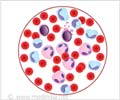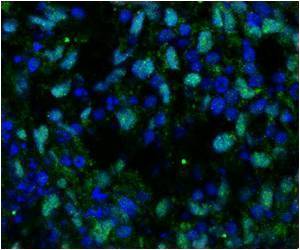Although Imatinib, the drug used to treat people with chronic myeloid leukemia (CML), has been shown to drive cancer into remission, relapses have been noted.
Although Imatinib, the drug used to treat people with chronic myeloid leukemia (CML), has been shown to drive cancer into remission, relapses have been noted soon after treatment is withdrawn. Now scientists from UC Irvine have derived from their research that Imatinib therapy could control CML under special conditions if taken for a long duration.
Mathematician Natalia Komarova and biologist Dominik Wodarz also developed a tool that eventually could help doctors determine which combination of drugs would be most beneficial to a CML patient, and they determined why, in some cases, Imatinib does not block cancer growth. The results of their study will appear Oct. 3 in the journal Public Library of Science ONE.CML is a quick-progressing cancer that starts in the bone marrow and moves into the blood. The disease proceeds in three stages, the last one characterized by patient survival of only a few months. In 2007, an estimated 4,570 people in the United States will develop CML, and 490 people will die from it, according to the National Cancer Institute, a division of the U.S. National Institutes of Health.
The drug Imatinib is a promising cancer treatment because it has few side effects, and it specifically targets cancer cells. In their study, the UCI scientists focused on Imatinib and the behavior of cancerous stem cells. Just as normal stem cells maintain organs and a functioning body, cancer stem cells are thought to maintain cancer growth and are tough to kill with treatment.
Many scientists believe that Imatinib can kill regular cancer cells but not stem cells. When treatment ends, the remaining stem cells can produce more cancer cells, thus exacerbating the disease. According to this view, there is no hope to cure CML.
The UCI scientists, however, believe Imatinib can kill cancerous stem cells but not when the stem cells temporarily stop dividing, a state known as quiescence. All cancerous stem cells have the ability to enter the quiescent state. Evidence indicates that when such sleeping stem cells wake up, Imatinib can kill them.
In their paper, the scientists present a mathematical formula that can calculate how long it would take to kill all of the stem cells and cure the cancer. This length of time -- which could be different for each patient -- is based on how often the cancerous stem cells fall asleep and how quickly they wake up. Once the scientists can test their theory with patients, they will be able to determine how long the cure might take.
Advertisement
In addition to sleeping stem cells, another barrier to eradication by Imatinib is that cancer cells can mutate to become unresponsive to certain drugs. Conventional thought is that if sleeping stem cells prolong a cure, other cancer cells will have ample time to mutate and become drug resistant.
Advertisement
“The model requires the number of cancer cells that exist, how fast the cells divide and die, and how fast they go to sleep and wake up,” Wodarz said. “Once you have those numbers, you can determine how many drugs to use in combination to make sure drug resistant mutants do not become problems.”
Source-Eurekalert
GAN/C







